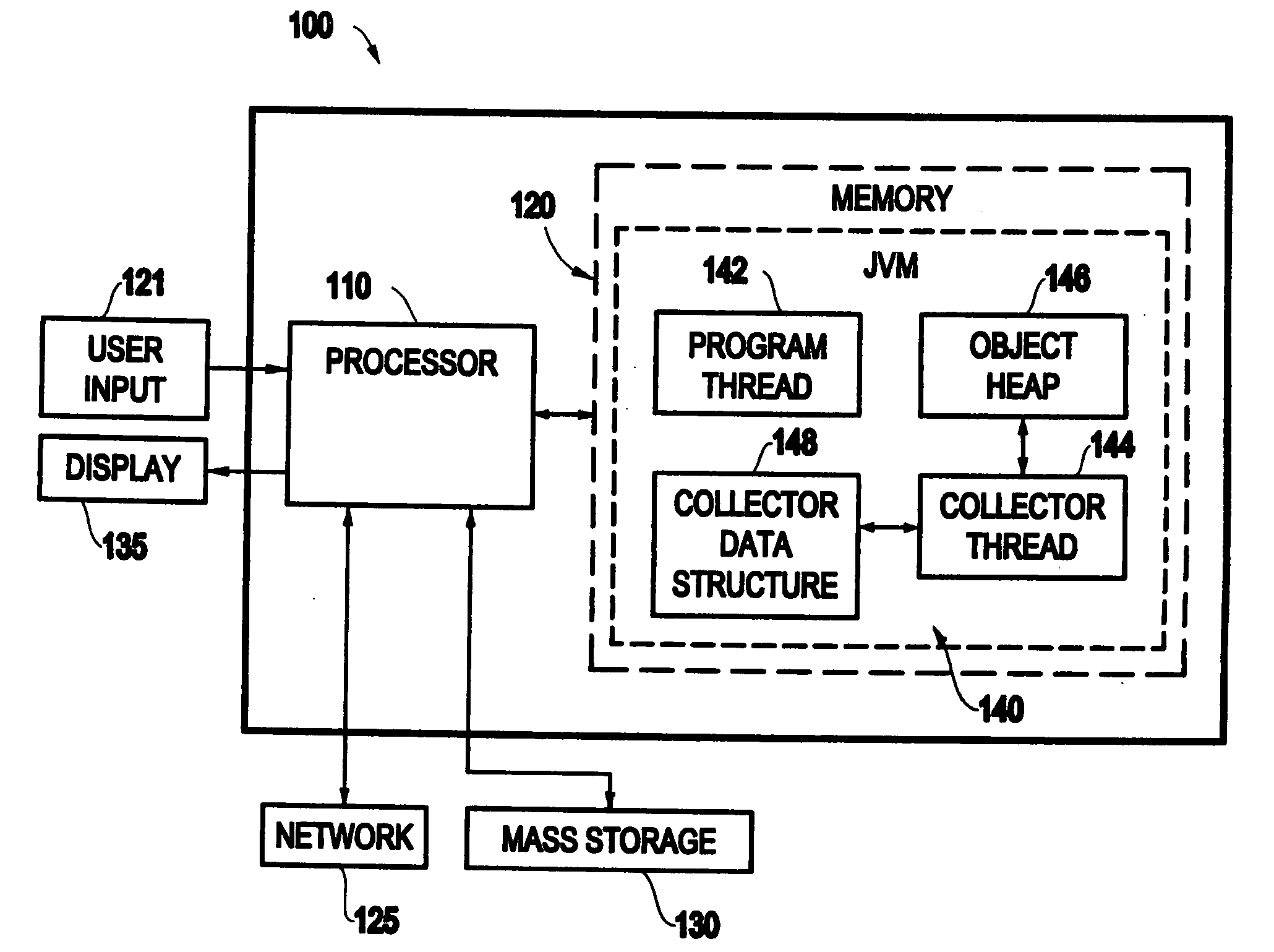Method and program for space-efficient representation of objects in a garbage-collected system
a garbage collection and object technology, applied in the field of methods and programs for space-efficient representation of objects in garbage collection systems, can solve the problems of inability to meet the requirements of “necessary” devices such as cellular phones, inability to meet the requirements of real-time collectors, and inability to meet the requirements of other requirements. , the additional complexity, space and time overheads directly associated with real-time collectors, etc., and achieve the effect of improving collector performance in many inappropriate ways
- Summary
- Abstract
- Description
- Claims
- Application Information
AI Technical Summary
Benefits of technology
Problems solved by technology
Method used
Image
Examples
Embodiment Construction
[0061] Referring now to the drawings, FIG. 1 illustrates an system 100 which includes a processor 110 for executing a collector program to perform a method (e.g., a method of collection). The method includes using an object model during a collection phase that is different than an object model used during program execution.
[0062] The processor 10 may also execute a program to perform a method including assigning a hash code to at least some objects, and consulting a structure that maintains a mapping of objects to hashcode values to determine said hashcode for one of said objects. Consulting may be performed when a hashCode( ) method for the one of the objects is called.
[0063] The processor 110 may also execute a program to perform a method including storing a class pointer and garbage collector state information in a single word, and accessing said class pointer by masking out non-class bits. Garbage collector state bits may be represented such that the garbage collector state bi...
PUM
 Login to View More
Login to View More Abstract
Description
Claims
Application Information
 Login to View More
Login to View More - R&D
- Intellectual Property
- Life Sciences
- Materials
- Tech Scout
- Unparalleled Data Quality
- Higher Quality Content
- 60% Fewer Hallucinations
Browse by: Latest US Patents, China's latest patents, Technical Efficacy Thesaurus, Application Domain, Technology Topic, Popular Technical Reports.
© 2025 PatSnap. All rights reserved.Legal|Privacy policy|Modern Slavery Act Transparency Statement|Sitemap|About US| Contact US: help@patsnap.com



